We know about the three types of heat transfer. In this post, we will see the process of how is heat transferred by convection.
When we heat a fluid, the bottom layer heats up, expands, and moves upwards, replacing the cooler layer. The warmer layers are less dense compared to the cooler ones. The change of layers happens due to buoyancy. In this way, we can tell how does convection horizontally transfers heat.
Now let us know how does convection transfers heat in other resources.
How is heat transferred by convection explained with the help of a diagram
By observing the below diagram, we can understand how does convection transfers heat in detail.
Consider a pot of boiling liquid. In the beginning, when a heat source is connected to it, the kinetic energy creates a vibrating movement that makes it move.
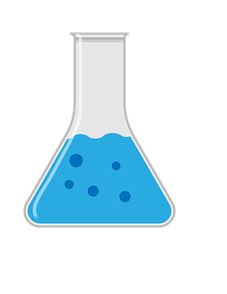
The layer of liquid near the surface of the pot heats first, acquires energy and moves upwards. These molecules contain a lot of energy and are less denser.
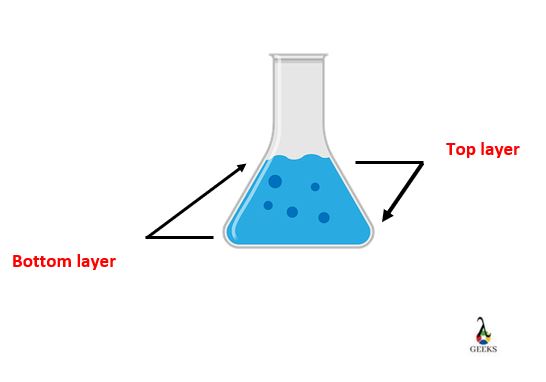
The layer which moves upwards pushes the colder layers downwards. These colder layers are far away from the surface of the pot and are denser.
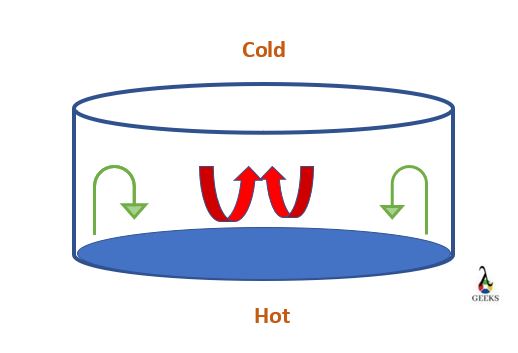
In this process, convection currents are produced in association with the buoyant principle; they are responsible for exchanging layers.
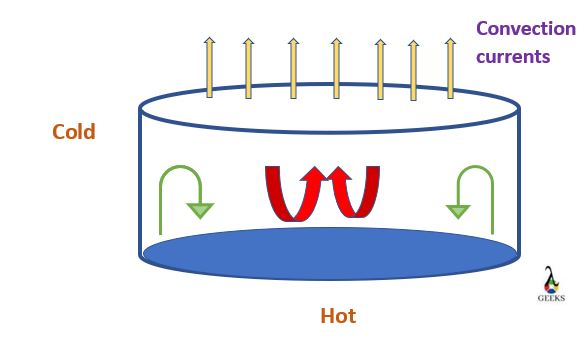
The cycle repeats until there is a balance in temperature.
It is how a convection process occurs similarly in gases.
How does convection transfer heat in the mantle
The convection method helps maintain the gradient of the temperature of magma in the earth’s core called mantle.
Mantle present in the core of the earth starts heating up due to some factors. The layers with less temperature than the more burning layer move below. This process happens due to the principle of buoyancy. Due to this phenomenon, convection currents are produced, and the mantle moves in the horizontal path, which is very much near the earth’s surface.

In this way, heat is transferred by convection in the mantle.
How is heat transferred by convection
Convection, in general, is a transport of heat molecules in different regions that varies in temperatures. Here, let’s see how convection happens in the air.
The particles present on the surface layer get heated and move to the upper layer of the atmosphere, interchanging the positions with higher density layers. The process continues and results in currents that are responsible for maintaining the balance of temperature.
In this way, convection can be seen in air or gas.
Factors affecting convection heat transfer
The vital factors that affect the convection transfer of heat molecules from one component to another are as follows,
- The velocity of the liquid and gaseous substances.
- Nature of viscosity (high or low) of the fluids.
- Rate of heat flux of the transfer.
- Roughness nature of the surface.
- It also depends on whether the flow is in a single or two-phase.
These are some essential elements that affect convection.
Principles of convection heat transfer
The primary principle process that is followed by convection is given below;
- The process takes place when heat molecules are taken away from a body through air.
- If the surrounding around is comparatively cooler than the body, there is a chance that air absorbs heat molecules and move upwards.
- The cycle continues, and the warm body becomes cool when air is blown towards it.
It is the primary principle process of convection transfer.
Importance of convection heat transfer
Convection helps us in many different ways, right from the natural process to manufactured things. Some primary importance of convection are mentioned below;
Convection plays a critical role in maintaining the balance between the temperature gradient of surroundings (which includes both air and water).

The convection process helps maintain the flow of magma in the mantle core of the earth, and any disturbance may lead to disasters like volcanic explosions, earthquakes, etc.
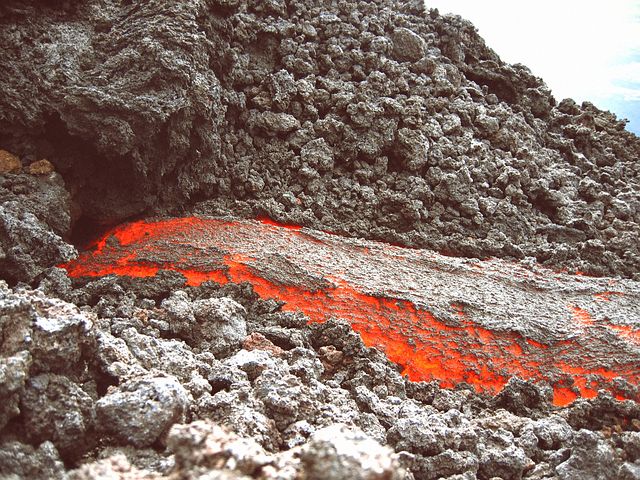
The types of convection also play an essential role in physics, i.e., can observe the process of natural convection in the particular branch of physics called stellar physics.
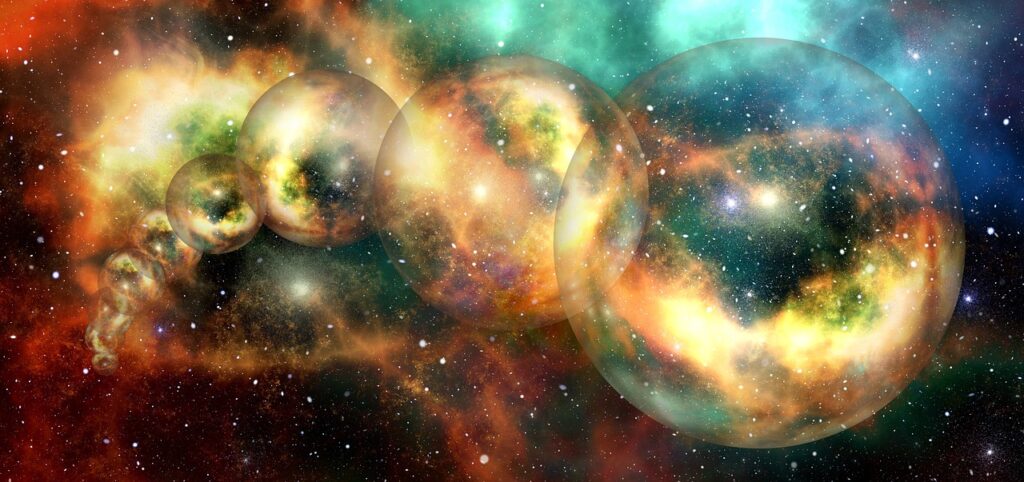
The convection in the atmosphere may also lead to greyish thunder clouds and even clear white clouds.

The process can be seen in many heating systems in industrial companies. It is an important concept to be studied in mechanical, civil, and chemical branches of engineering because the convection process is an essential element in selecting components, efficiency, and reactions.
It helps maintain the room temperature since there is an exchange of warmer and cooler air inside the four walls of the room.
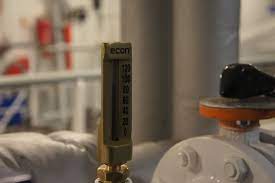
These are some of the essential primary features of the convection process
Disadvantages of convection heat transfer
Even though convection is a vital process, there are some disadvantages to it.
- As the current convection moves in the surrounding, it can even impart dust particles which may include allergens; the inhale of these particles may lead to critical allergies to an individual.
- It may lead to creating a drought-like atmosphere at home due to the exchange of particles, which may lead to excessive heat during summer.
- Even there is a chance when you open the door of the window, and there will be the transfer of heat faster than the radiation mode.
These are some fundamental disadvantages of the convection process.
Convection heat transfer in air
Convection transfer is heat in the air that helps in maintaining the surrounding temperature.
- In a sunny place, the surface is heated up, the dense hot air near the surface moves upwards.
- The cooler layer of air, which is less dense, moves down to replacing the hot air (carries energy along with it).
- The cycle continues, and at some time, it reaches a dew point; the moist air undergoes condensation to form clouds.
- The layers keep interchanging by changing their density; in this way, it maintains the temperature.trong>
- We can see that the warm air undergoes expansion and becomes less dense and can be studied in detail through ideal gas law.
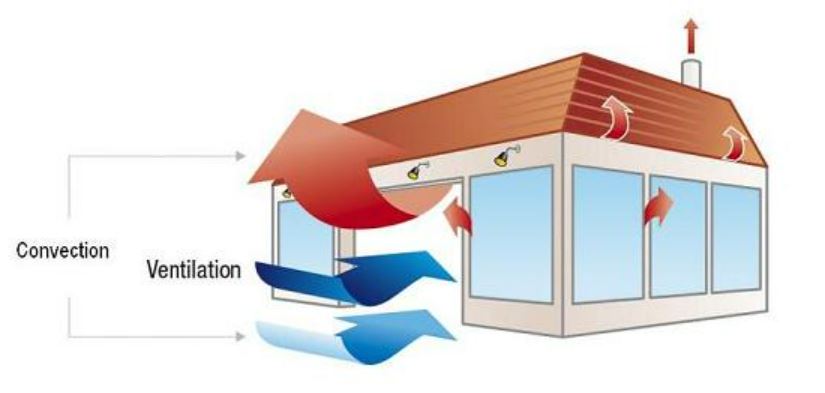
It is how convection currents help in heating the surrounding atmosphere.
Convection heat transfer in liquids
Convection heat transfer occurs within the solid boundary surfaces of the liquid molecules.
- At the beginning of any heat transfer, conduction occurs in the liquid substance through the collision of molecules. Later, the massive movement of the molecules occurs through convection mode in the fluid matter.
- It transfers energy from one layer to the other layer of the liquid.
- The layers differ in temperature through a thin layer of liquid that is just beside the solid layer.
- The layers of continuous liquid interchange, i.e., the heated layer, move upwards, replacing the less hot layer. This change in position leads to the heating up of a liquid through convection currents.
- It is possible in liquid because of the easy displacement of molecules.
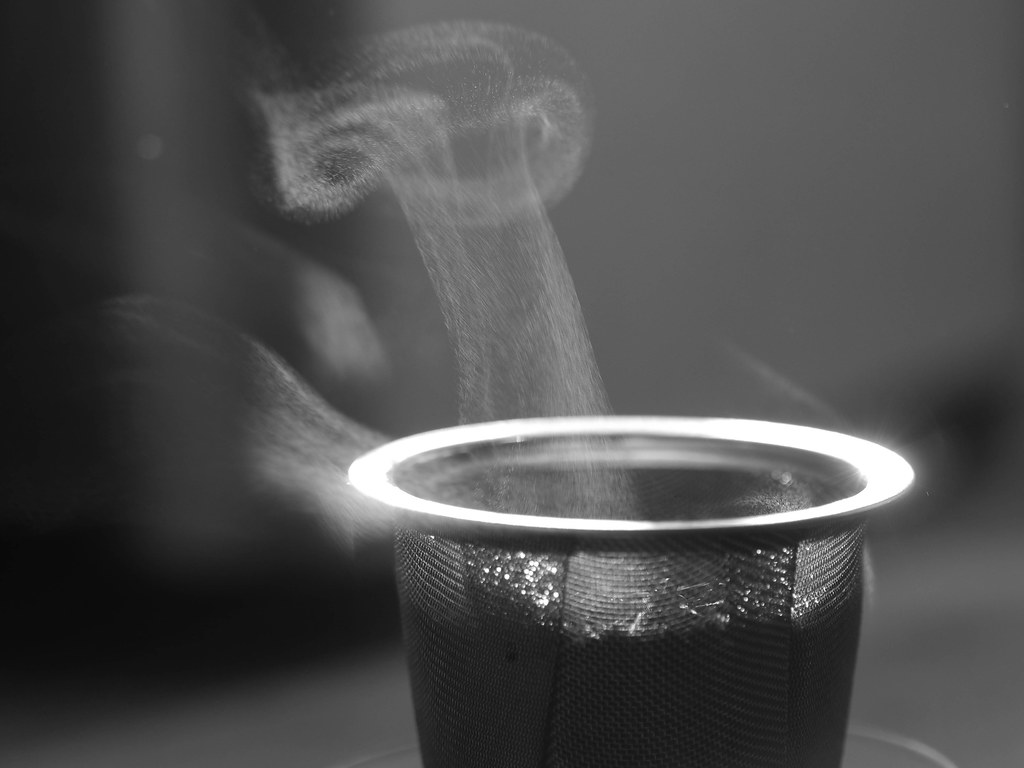
It is how a convection process occurs in the liquid matter.
Frequently Asked Questions | FAQs
Does convection help in the formation of clouds?
Convection plays a vital role in the formation of clouds.
Convection transfer of heating of air takes place vertically in the surroundings while advection is opposite to convection. When both vertical and horizontal molecules of air rise up, it forms cotton candy structured cumulus clouds.
Is convection better than conduction?
Convection is a better process in comparison with conduction.
Suppose we take the example of fluids, which involves both liquids and gases. In these states of matter method of convection is more effective compared to conduction. If you try to melt a cube of ice, you can notice both conduction and convection, and in this experiment, conduction transfers much less heat than the convection mode.
Is convection better than radiation heat transfer?
If we say in terms of safety, then convection is better than radiation transfer of heat.
We usually know that radiation is the fastest way of transfer of heat compared to convection and conduction. But the radiation involves the transfer of electromagnetic waves, which may sometimes lead to hazardous. So, we can say that convection is better than radiation in terms of safety.
What is the advantage of convection?
Convection always helps in the process of baking and cooking.
Convection creates a suitable dry atmosphere that helps in the caramelization of sugars. It is the reason when you cook, the vegetables or any other ingredients that you roast get browner and the interiors of the food will be soft. It is how convection heat transfer is beneficial.
What is an example of convection?
There are many examples of convection that we can observe around us.
When we boil a pan full of water, after a while, we observe bubbles because of the development of convection currents. The water present at the lower level gets heated up first and goes upwards, making the layer of cold water move downwards. This process continues, and it is how water gets heated up.
Also Read:

I am Raghavi Acharya, I have completed my post-graduation in physics with a specialization in the field of condensed matter physics. I have always considered Physics to be a captivating area of study and I enjoy exploring the various fields of this subject. In my free time, I engage myself in digital art. My articles are aimed towards delivering the concepts of physics in a very simplified manner to the readers.